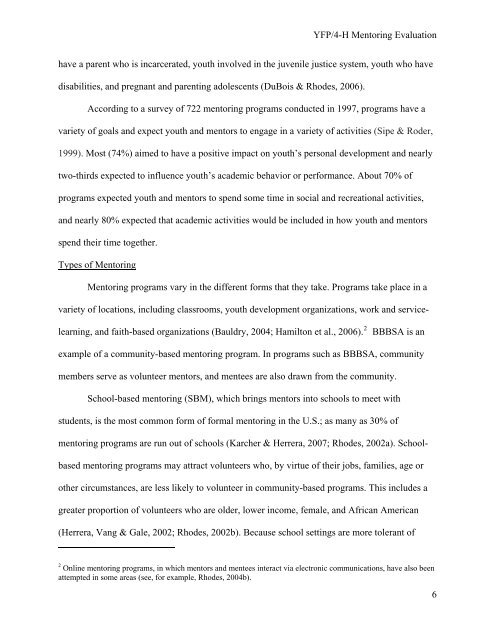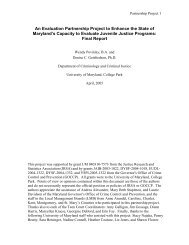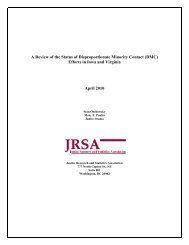A Process and Outcome Evaluation of the 4-H Mentoring/ Youth and ...
A Process and Outcome Evaluation of the 4-H Mentoring/ Youth and ...
A Process and Outcome Evaluation of the 4-H Mentoring/ Youth and ...
You also want an ePaper? Increase the reach of your titles
YUMPU automatically turns print PDFs into web optimized ePapers that Google loves.
YFP/4-H <strong>Mentoring</strong> <strong>Evaluation</strong><br />
have a parent who is incarcerated, youth involved in <strong>the</strong> juvenile justice system, youth who have<br />
disabilities, <strong>and</strong> pregnant <strong>and</strong> parenting adolescents (DuBois & Rhodes, 2006).<br />
According to a survey <strong>of</strong> 722 mentoring programs conducted in 1997, programs have a<br />
variety <strong>of</strong> goals <strong>and</strong> expect youth <strong>and</strong> mentors to engage in a variety <strong>of</strong> activities (Sipe & Roder,<br />
1999). Most (74%) aimed to have a positive impact on youth’s personal development <strong>and</strong> nearly<br />
two-thirds expected to influence youth’s academic behavior or performance. About 70% <strong>of</strong><br />
programs expected youth <strong>and</strong> mentors to spend some time in social <strong>and</strong> recreational activities,<br />
<strong>and</strong> nearly 80% expected that academic activities would be included in how youth <strong>and</strong> mentors<br />
spend <strong>the</strong>ir time toge<strong>the</strong>r.<br />
Types <strong>of</strong> <strong>Mentoring</strong><br />
<strong>Mentoring</strong> programs vary in <strong>the</strong> different forms that <strong>the</strong>y take. Programs take place in a<br />
variety <strong>of</strong> locations, including classrooms, youth development organizations, work <strong>and</strong> servicelearning,<br />
<strong>and</strong> faith-based organizations (Bauldry, 2004; Hamilton et al., 2006). 2<br />
BBBSA is an<br />
example <strong>of</strong> a community-based mentoring program. In programs such as BBBSA, community<br />
members serve as volunteer mentors, <strong>and</strong> mentees are also drawn from <strong>the</strong> community.<br />
School-based mentoring (SBM), which brings mentors into schools to meet with<br />
students, is <strong>the</strong> most common form <strong>of</strong> formal mentoring in <strong>the</strong> U.S.; as many as 30% <strong>of</strong><br />
mentoring programs are run out <strong>of</strong> schools (Karcher & Herrera, 2007; Rhodes, 2002a). Schoolbased<br />
mentoring programs may attract volunteers who, by virtue <strong>of</strong> <strong>the</strong>ir jobs, families, age or<br />
o<strong>the</strong>r circumstances, are less likely to volunteer in community-based programs. This includes a<br />
greater proportion <strong>of</strong> volunteers who are older, lower income, female, <strong>and</strong> African American<br />
(Herrera, Vang & Gale, 2002; Rhodes, 2002b). Because school settings are more tolerant <strong>of</strong><br />
2 Online mentoring programs, in which mentors <strong>and</strong> mentees interact via electronic communications, have also been<br />
attempted in some areas (see, for example, Rhodes, 2004b).<br />
6
















